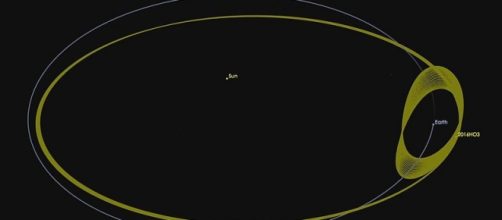Asteroid 2016 HO3 was seen for the first time on April 27, 2016 using telescope Pam-STARRS 1 in Hawaii. It orbits the sun, while at the same time maintains a relative distance from earth. Although its distance does not categorizes it as a true satellite, it can be qualified as the most accurate case of a quasi-satellite.
Physical characteristics
It measures between 40-100 meters (120-300 feet) in diameter. Its orbit around the sun keeps it at a distance of around 14 million km (9 million miles) from earth. Its distance and the fact that it does not circle the earth does not make it a true satellite, only earth´s companion or quasi-satellite.
What is a quasi-satellite?
Is an astronomical body with certain orbital configuration with the sun and a planet, in which the mass remains close to the planet during orbital intervals. Its orbit around the sun takes a similar time to the planet´s; however, its eccentricity is typically greater. These types of satellites are out of the reach of a planet´s attraction and tend to move away from the planet, eventually.
Its orbit around the sun
During its orbit around the sun, this asteroid flings ahead and behind earth once on each orbit. Having a tilted orbit, it also wobbles up and down the ecliptic. The asteroid also goes back and forth in an interplay with earth. When the earth´s gravity is strong enough to attract this body, it may remain not farther away than one hundred times the distance of the moon and not closer than 38 times the distance of our satellite.
Asteroid 2016 HO3 has remained as a quasi-satellite of earth for more than one hundred years and calculations predict that it may remain as a permanent companion of earth for centuries ahead or until its wobbling motion in space unlock it from the gravitational pull of earth.
There is a report of one asteroid following a similar pattern; Asteroid 2003 YN107, which was discovered on December 20, 2003, having been locked to earth for more than ten years, but it went away soon after.

